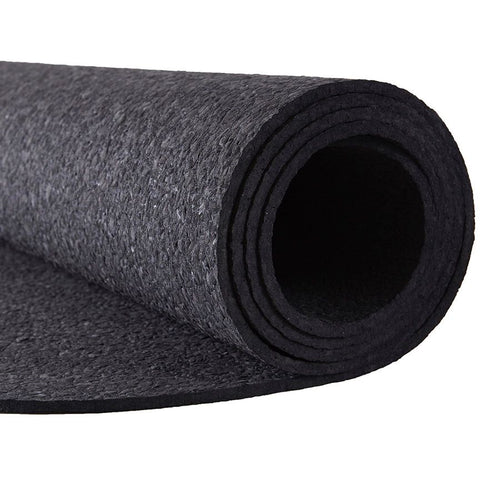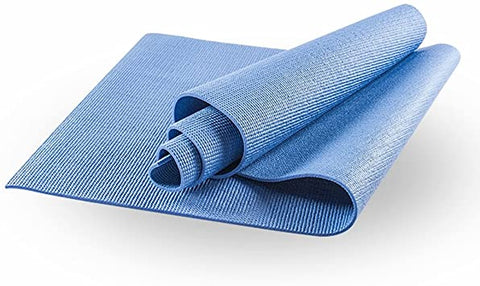Welcome to our Yoga Mat Showdown: TPE vs. PVC vs. Rubber! Here, we will detail all the important characteristics of each of the yoga mat types. Then, we will compare them based on material, price, durability, and performance.
TPE, PVC, and rubber yoga mats are the most popular yoga mat types as of now. Sometimes, deciding between them can be a hard decision, as there are more factors to consider than you may initially think. If you want to decrease your eco-footprint, you may opt for a different yoga mat type, but maybe sacrifice on other features. Or, you may want a better performing yoga mat, even though it is more harmful to the environment.
Down below, you can find the answers to your questions!
Yoga Mat Types: TPE vs. PVC vs. Rubber
Before we break down each of the mentioned three yoga mat types, check out the table below! It details all the pros and cons of the TPE, PVC, and rubber yoga mats. Maybe the table will help you with your final purchase!
|
Material |
Pros |
Cons |
|
Rubber |
|
|
|
TPE (Thermal Plastic Elastomer) |
|
|
|
PVC (Poly-Vinyl Chloride) |
|
|
Without further ado, let’s check out what goes on behind the curtains with these three yoga mat types!
Rubber Yoga Mat

The rubber yoga mats are probably the most eco-friendly you can find on the market. They are sustainably created with natural rubber gotten from rubber trees that are renewable. Also, rubber yoga mats don’t contain extra materials such as EVA, or synthetic rubber types.
The rubber yoga mats are definitely one of the preferred choices when it comes to yoga practice. They are eco-friendly, very comfortable, and have a superior grip. The mats are also anti-microbe, so they are cleaned more easily.
There are some disadvantages to this kind of yoga mats too. If you are allergic to latex material, you may get an allergic reaction from some of the rubber yoga mats. Also, the natural rubber yoga mats are usually heavier than their counterparts, so that makes them less portable.
The price you will pay for rubber yoga mats is much higher than what you would give to TPE and PVC yoga mats. So, it is up to you to decide if you want natural, eco-friendly properties, and higher quality, with sacrificed portability; or something less eco-friendly, but more compact.
TPE Yoga Mat

Thermal Plastic Elastomer (TPE), elsewhere known as thermoplastic rubber, is a copolymer class or a mix of polymers. Usually, the polymers mixed to create TPE material are plastic and rubber. Anyway, the thing with TPE is that it consists of materials with thermoplastic and elastomeric qualities. So, TPE yoga mats are constructed from thermal plastic elastomers and other material. The fusion with other materials is done with closed-cell foaming under high temperatures. After this process, the TPE yoga mat is easier to clean and is resistant to various microbes.
Also, the TPE material has a few advantages, such as increased eco-friendliness, better elasticity, and recyclability; which make the TPE yoga mats more eco-friendly than PVC yoga mats. You see, the TPE material has some attributes of non-PVC, non-toxic, and non-heavy metal materials. This kind of profile makes TPE yoga mats suitable for both travel and house use.
The TPE yoga mats are a relative newcomer to the yoga mat market. Right now, it is the most popular in the USA, Europe, and high-spenders in China. Its market potential is huge, thanks to the high performance and high environmental protection it offers.
PVC Yoga Mat

This type of yoga mat is created from Poly-Vinyl Chloride (PVC) resin powder and anti-tear fiber. These two are foamed under high temperatures with the open-cell technology. What is this technology, you may ask? Long things short, it helps with sweat and oil absorbtion in the mat. That makes the mat good for gripping, but the mat may also attract more bacteria. Also, open-cell technology makes the PVC yoga mat harder to clean.
PVC yoga mats are the all-rounders of yoga mats; thanks to the PVC material and the high density of the mat itself. So, you can easily transfer your yoga sessions outdoors, in both heated and non-heated rooms, as PVC is quite durable. Also, more vigorous yoga styles, like hot yoga, are awesome to practice on PVC yoga mats! Thanks to the elasticity of PVC, you can easily roll or fold the PVC yoga mats.
What about the quality of this material for the environment? Well, PVC isn’t going to get any awards for the most eco-friendly material. Why is that so? So, PVC contains phthalates. These are combined with plastic material to increase the flexibility and durability of the plastic material. The problem is that phthalates are linked with negative environmental impact during the manufacturing process of the PVC yoga mat. Also, there are some links with phthalates and some health problems like endocrine disruption, diabetes, obesity, and low immunity.
Even though the PVC may not be the most eco-friendly material out there, it still isn’t that critical for the environment in a certain way. As the PVC yoga mats are extremely durable, there is less need to throw them away and replace them.
On the yoga mat market currently, PVC yoga has the largest slice of the pie. Well, it’s no wonder, because, other from environmental and health impacts its material might have, these yoga mats are more portable, less slippery, and easily cleaned. But, you never know what other chemicals are mixed with PVC material, so always be cautious.
So, what is the conclusion to our Yoga Mat Showdown: TPE vs. PVC vs. Rubber? You can take a peek at the table again if you want a quick summary of the advantages and disadvantages of each yoga mat type. Let’s keep it short here. We can say that the TPE is taking the best things from rubber and PVC yoga mats, making them highly desirable these days. Still, if you want to pay less for decent quality, albeit with increased eco-footprint, go ahead with the PVC yoga mat. If you want the highest quality for the highest price, then opt for rubber yoga mats.
__________
So, what will be your choice for the next yoga mat? Just to let you know, we can design your custom yoga mat free of charge!
If you have other questions about different yoga mat types, do not hesitate to reach us through email or live chat!

